EN 12492: 2012
Helmets for mountaineers
Impact / Shock Absorption
Similar to both industrial helmets and bump caps, mountaineering helmets are subjected to an impact from a falling mass onto a fixed headform. However, to reflect the nature of the use, additional impacts are required at the front, side and rear of the helmet. These impacts are carried out by tilting the headform on the rigid base at an angle of 60° (so that impacts are carried out at 30° from the horizontal plane of the headform). Impacts are carried out using two strikers, one flat and one hemispherical, each weighing 5kg. Helmets are impacted using the hemispherical striker dropped from a height of 2 metres, and at the front, rear and sides using the flat striker dropped from a height of 500mm. In all cases, the transmitted force through the headform cannot exceed 10kN.
Penetration
As with industrial helmets and bump caps, mountaineering helmets are intended to provide protection against sharp / pointed objects, and so are tested for penetration by sharp objects. The test in EN 12492 is essentially the same as that specified in EN 397, where a 3kg conical striker is dropped onto the helmet from a height of 1 metre, and any contact between the helmet and headform (although in EN 12492 the headform is in the form of a standard test block) noted. Penetration tests on mountaineering helmets can be carried out on any point around the shell of the helmet however, unlike EN 397, where they are restricted to an area at the crown of the head.
Design Requirements
Most specifications for protective helmets include a number of requirements for the design of a helmet in addition to the specific performance requirements. These typically encompass the area of coverage provided by the helmet, as well as the field of vision afforded to the user when worn. They can also cover a number of ergonomics and safety-based requirements, such as clearance between the head and the shell of the helmet (particularly in the case of industrial helmets).
Retention System
Helmets can only protect the head when they are being worn and therefore the means for retaining the helmet on the user’s head requires as much attention as the rest of the head protection, and so is subject to a series of tests. The specific test carried out is dependent on the type of helmet, but two main tests are carried out:
Retention system strength: The retention system (in particular, the chin strap) is subjected to a force, applied either statically or dynamically, to ensure the strap is unlikely to fail at the point where it is most necessary. In the case of industrial helmets, it is however desirable that the chin strap will not cause a strangulation hazard, and so cannot be too strong, and therefore straps need to include a break-away element at the anchorages, intended to fail within a specific load range. Typically, the helmet, including chin strap, is fitted to a suitably-sized headform, with the chin strap either fitted to an artificial chin (consisting of two rollers mounted on a frame), where the headform remains static, or to the chin of the headform itself, where the headform is used to dynamically apply the force. The chin strap is then subjected to either a static force (where the artificial chin is slowly loaded until failure) or a dynamic (shock) load, applied using a falling mass, and the amount of stretch in the chin strap is measured.
Retention system effectiveness: Helmets are subjected to a shock load, applied to the rear or front of the helmet in an attempt to pull the helmet off the headform. This is intended to consider the risk of the helmet catching on an obstacle and being unintentionally pulled off the user’s head. The test load (applied using a 10kg falling mass) is applied, via a system of pulleys, to the rear of the helmet when mounted on a suitable headform, with the direction of loading following a direction approximately 45° from the horizontal towards the front of the headform (this is occasionally repeated on the front of the helmet). In order to meet the requirements of most protective helmet standards, the helmet must remain on the headform.


